Tidewater is a simple concept--your backyard, a half dozen or so fly rods, a couple of cameramen, your twin brother, a close friend, a massive boat, and some really big, really pissed off, and really hungry apex predators ready to steal your $1,500-dollar set up right from your hands. Bring them all together, mix well, and hold on for the adventure of a lifetime. This is what Brian and Colby Trow of Mossy Creek Fly Fishing did. And where most filmmakers often suffer a sophomore slump for their second film, Tidewater delivers a much more stunning visual landscape, tighter story line, and adrenaline pumping piscatorial porn shot than the Trow’s first effort, the brotherly love inspired BloodKnot does.
In this travel-the-world moment of fly fishing where we look for the most exotic species in the most elegant and hard-to-reach places sometimes we overlook the adventure that rests right in our backyards. The Trows would not let that happen.
“The concept for Tidewater was actually conceived as we filmed our first movie, BloodKnot” says Colby Trow, the eldest of the Brothers Trow. Virginia, especially the Shenandoah Valley where the brothers call home, has some of the most unpredictable weather in the lower 48, as storms stack up behind the Blueridge Mountains before spilling over toward the Atlantic.
“When we scheduled filming for BloodKnot we had some of the worst weather imaginable. We were actually blown off the river and here we were paying cameramen to lie around our house eating our food and waiting for a window to film.”
As the Doritos and PBR waned, the film crew and Brothers Trow discussed what to do. With a healthy dose of cabin fever, a desire to fish, and a waning film budget, the Trows decided to chase the most exotic species they could think of in the Staunton area.
“Grass carp, it was grass carp that inspired Tidewater, well, carp and our friend Art Webb” Trow admits. “It’s a fairly exotic species found in almost everyone’s backyard, so yeah, Why not?” He laughs as he says it. “That inspired the idea, but our aspirations were much grander for Tidewater at the outset. We wanted to go after the biggest and meanest species found around Virginia Beach. We also wanted to see if what Webb was telling us was true.”
Webb, a marketing guru and owner of BCF Agency, met the Trow brothers at the American Fly Fishing Trade Association’s IFTD show and kept telling them about the marlin off Virginia Beach and their willingness to take a fly. Trow recalls how Webb kept muttering and reminding them, “Jeez, Ocean City, New Jersey is the white marlin capital of the world.”
Originally slotted to cover the chase for cobia, tarpon, striper, bull reds, and marlin at Webb’s insistence, Tidewater was initially haunted by the same weather challenges as BloodKnot.
“I’ll be damned,” Trow says, “Here we are, we’ve hired a camera crew for two weeks to film our inshore species and here comes the rain and rough seas. Of the fourteen days we had the crew booked for, nine of them found us at the docks looking at each other.”
As many anglers know, bad weather, unless you catch the front side of the front, often coincides with rough fishing on the backside.
“Striper, our go-to fish for the original Tidewater concept, our freaking everyday fish, never showed itself. The bait was there, the tides were right, the fish just never showed.” With a camera rolling on a finite shooting calendar, this is a challenge.
“We chased redfish and tarpon,” Trow says as he blows out a frustrated breath, “They were there, but just not enough to make a complete film.”

But somewhere, Neptune must have had other plans.
“It was weird, man.” Trow coughs. “The days we had booked offshore seemed to coincide with perfect fishing weather, and the fish were even more cooperative.”
There are few people, if any, which can say they have almost pulled an IGFA Billfish slam (sailfish, white marlin, and blue marlin), even fewer who can even mutter that it unbelievably was accomplished on the fly. Webb and the Brothers Trow, however, are able to tell a different story and with video evidence — Tidewater — to prove it.
“We missed it by the Atlantic Sailfish,” huffs Trow. “Almost everyone with a fly rod has caught a sail, but no.”
Tidewater ends with Brian, the youngest Trow, battling a blue marlin, the first one caught on fly in Virginia waters.

“That was my take-home experience,” the older Trow says, “Watching my brother fight that fish, after years of us fishing the Virginia shore and Virginia’s creeks and rivers, that there is always something else out there, like Indiana Jones, there is always a new challenge.”
Colby Trow grows wistful. You can hear the remembrance in his voice in hushed tones that recalls that moment we have all had that keeps us coming back to this god-forsakenly frustrating endeavor time and time again.
“It’s that discovery of the new species and figuring it out, the calculation, the preparation, and the unknown challenge to overcome the new.” Trow laughs, as he returns from the memory I just lost him to.
“That’s it. Your backyard is just as exotic as the Seychelles and the Christmas Islands, just a lot cheaper and a lot more rewarding.”
For us, the viewers, the experience is not the unknown or the Trow’s backyard, but the visuals Tidewater provides and the reminder to get outside and experience that unknown and the challenges that makes fishing rejuvenating. It’s a reminder that as we lust for that third world escape, which we all should and should all experience, that adventure as Tidewater illustrates and Colby Trow reminds us is always present if you’re willing to look for it and that discovery may very well be your own backyard.




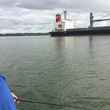











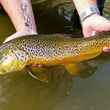




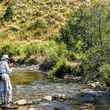



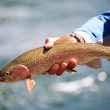
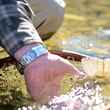


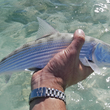

Comments